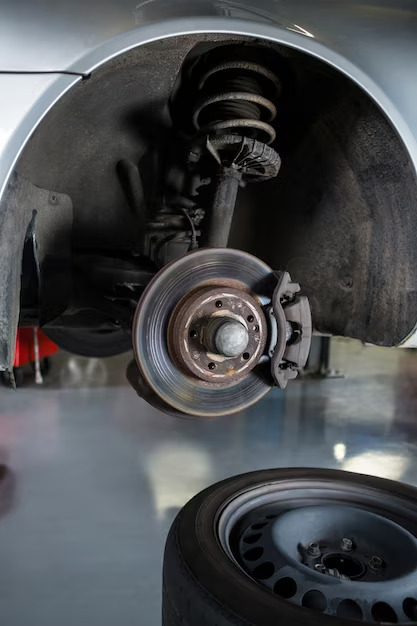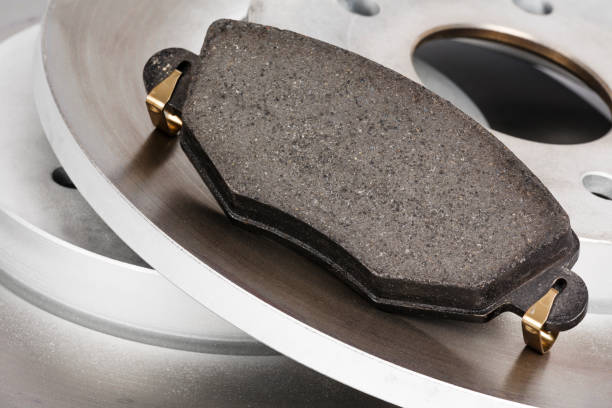By Stephen Macharia
“Whoa! It is time to hit the brakes!” These are words of wisdom that every experienced driver swears by. While speed thrills, the ability to stop swiftly and safely is an art that separates good drivers from great ones. In the motoring world, the spotlight often shines on powerful engines, sleek designs, and blistering acceleration. But today, let us step into the shadows and explore a less celebrated hero – your vehicle’s brake pads

From the dawn of wheels to modern stoppers
As you slam the brakes to avoid an imminent disaster on the road, it is crucial to remember that the braking system is your vehicle’s unsung saviour. It is a story that stretches back to the early days of automobiles. In fact, brake blocks, the precursors to modern brake pads, were invented by Herbert Frood of Derbyshire, England.
In 1901, Frood patented these “brake blocks,” which were crafted from materials that seem bizarre by today’s standards – cotton cloth filled with resin, camel hair, leather, and even wood.
Yet, even before Frood’s invention, another motoring maverick, Bertha Benz, the wife of Mercedes-Benz founder Karl Benz, was making her mark. In 1888, she created the first known brake pads, fashioned from leather, as part of an early patent for their automobile.
The real evolution of brake pads took off in the mid-20th century when drum brakes started giving way to the modern disc brake systems. As technology pushed vehicles to higher speeds, the demand for advanced braking systems grew.
The friction material revolution
Back in the early 1900s, when automobiles crept towards then daring 30 miles per hour mark (about 49 kilometres per hour), Herbert Frood was the man with a vision. He focused on improving friction materials and, under the brand name ‘Ferodo,’ introduced the first asbestos friction material in 1910. Asbestos, a natural mineral known for its ability to withstand high temperatures and act as an excellent insulator, paved the way for safer braking.
Frood’s vision crossed the Atlantic, leading to the establishment of Ferodo & Asbestos, Inc. in 1901. In 1920, the Herbert Frood Company was rebranded as Ferodo, Inc., with Frood as the majority owner.
However, as technology marched on, so did brake pad materials. The mid-20th century saw a shift from asbestos-based pads to ceramic, metallic, and organic brake pads – the very types that keep your vehicle safely anchored today.
The brake pad menu
Today, the world of braking presents a smorgasbord of options, each with its advantages.
Organic brake pads: These pads generate a moderate amount of friction without excessive heat, making them ideal for everyday driving and commuting. They are known for their quiet operation and gentle wear on brake rotors. However, their composite nature means they wear out more quickly and have a narrower temperature range.
Ceramic brake pads: Crafted from a denser ceramic material, these pads have gained popularity for their whisper-quiet operation, minimal dust production, and broad temperature tolerance. They are ideal for motorists who value peace and cleanliness during daily drive.
Semi-metallic brake pads: Falling between the extremes of organic and full metal, semi-metallic brake pads typically contain 30% to 70% metal. These diverse metals, combined with graphite lubricant and other fillers, offer a balance between everyday commuting and track racing. Yet, they can be noisier and put more strain on the brake system compared to their ceramic or organic counterparts.
So, which brake pad is the one for you? If you are a performance-driven enthusiast seeking that extra edge, the metallic brake pads may be your best bet, thanks to their superior performance across a wider range of conditions.
As your wheels spin and your heart races, remember that beneath the roar of the engine lies the unassuming hero of safety – the brake pad. So, whether you are cruising the city streets or burning rubber on the racetrack, make sure your trusty brake pads are up to the task. Because, in the end, the measure of a great driver is not just in how they drive but in how they bring the vehicle to a stop.
